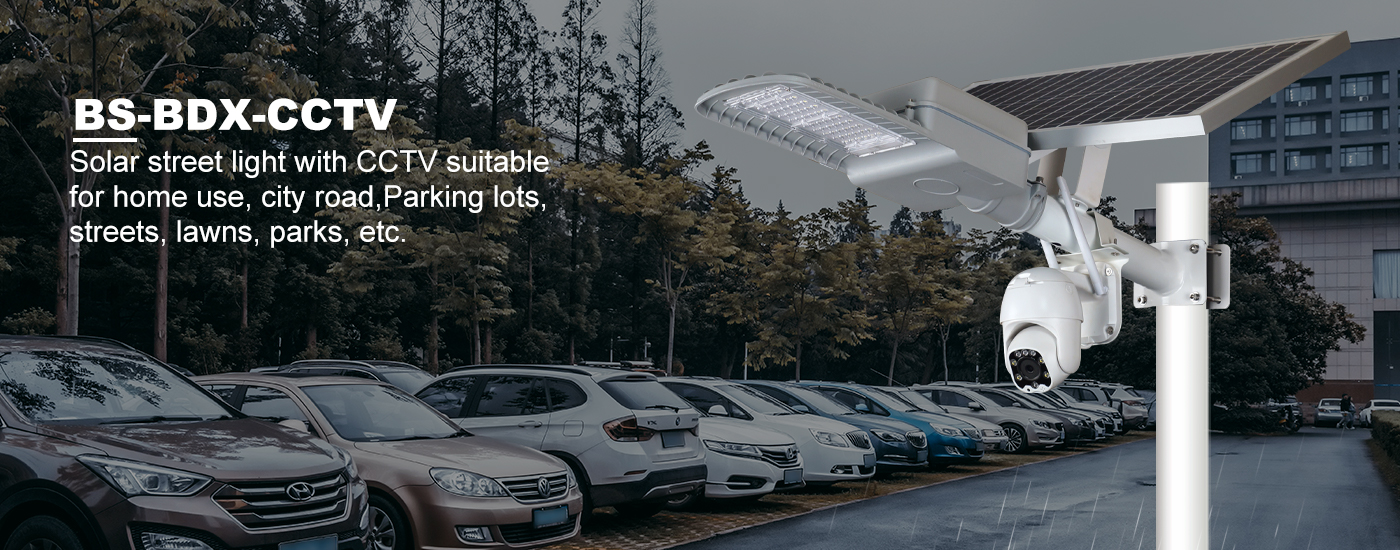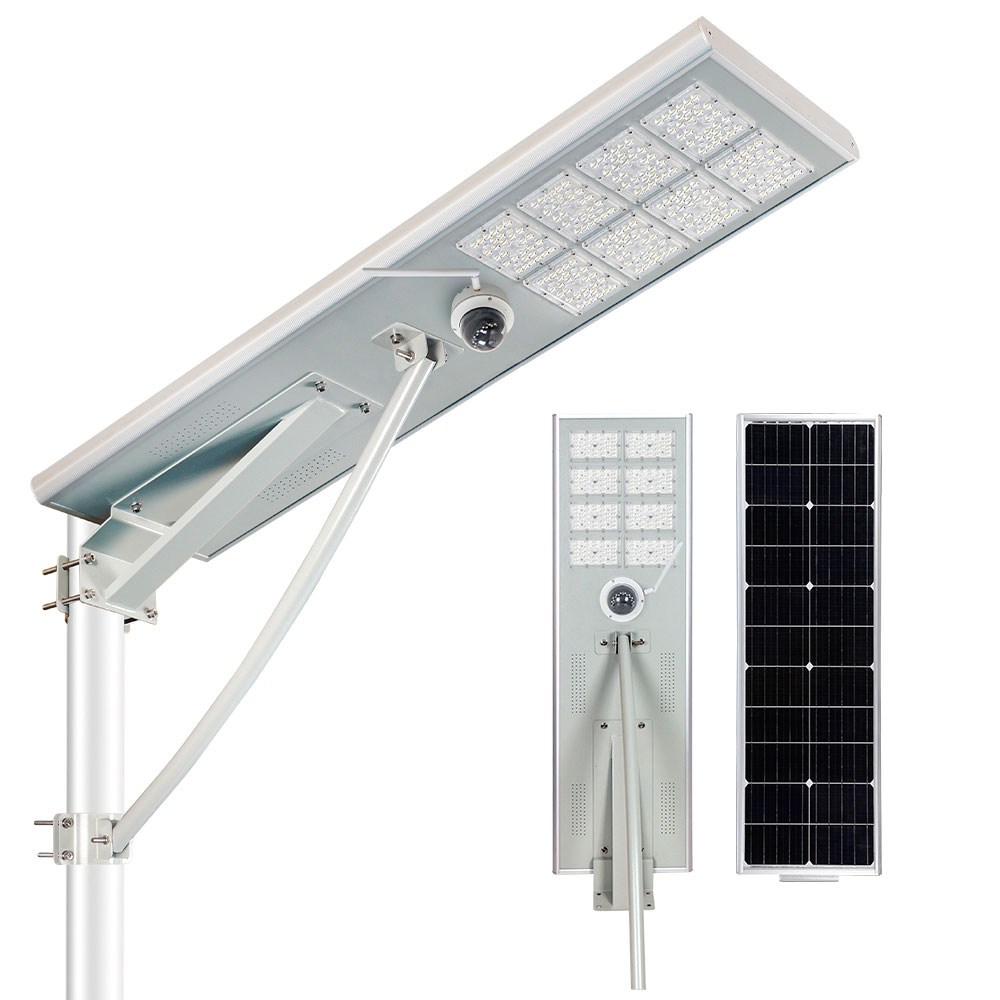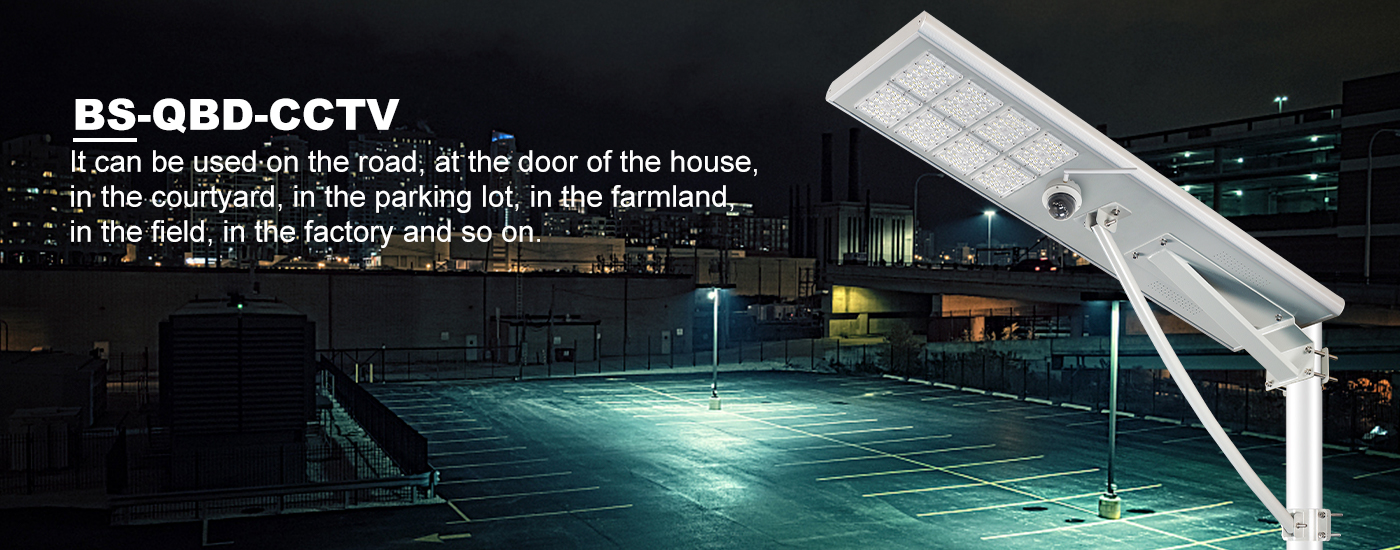Solar Street Light With CCTV
-
Solar Street Light With CCTV and Urban Security Solutions
- Solar street lights with CCTV bring lighting and surveillance together into one efficient, off-grid solution—perfect for smart city infrastructure, urban safety, and remote area monitoring.
- Powered by solar energy, these advanced systems not only illuminate roads, pathways, and public spaces but also provide 24/7 surveillance with real-time video monitoring, motion detection, and wireless connectivity (4G/LTE or Wi-Fi). They're ideal for urban neighborhoods, parking lots, schools, construction sites, and critical infrastructure zones where visibility and security are equally important.
-
Advantages of Solar Street Lights for CCTV Cameras
- Image Sensors and Optics: CCTV cameras are equipped with advanced image sensors, usually using Charge Coupled Device (CCD) or Complementary Metal Oxide Semiconductor (CMOS) technology. These sensors convert received light signals into electronic signals, while optical systems such as lenses and apertures are used to collect and focus light onto the image sensor to produce a clear image.
- Infrared (IR) Illumination: To enhance surveillance capabilities at night and in low-light conditions, cameras integrate infrared illumination technology. Infrared LED lights emit light that is invisible to the human eye, allowing cameras to capture images even without traditional lighting, thus enabling 24/7 surveillance.
- Video Compression Technology: Video data captured by the camera is processed through advanced compression algorithms such as H.264 or H.265. This compression technology can significantly reduce the data size while maintaining image quality as much as possible, thereby improving storage and transmission efficiency.
- Image Processing and Central Processing Unit (CPU): The dedicated CPU in the system is responsible for performing image processing tasks such as object recognition, motion detection, and facial recognition. These intelligent processing functions can improve the recognition accuracy of the camera and effectively reduce false alarms.
- Data storage: Processed video data is usually stored in high-capacity hard disks or solid-state drives to ensure long-term archiving. Video data can be used for later analysis, forensic investigations and compliance with data storage regulations.
- Real-time video transmission: CCTV systems integrate communication modules to support real-time video transmission to a central monitoring center or cloud server via Wi-Fi, Ethernet or cellular networks, ensuring that authorized personnel can access video information at any time and make decisions quickly.
- Remote monitoring and control: The system also supports remote monitoring functions. Authorized users can remotely access video sources and adjust camera settings through a central console or mobile device, thereby more flexibly responding to potential security threats.
- Encryption and network security: To ensure the security of data, the system uses encryption protocols during transmission to prevent unauthorized access. Strong network security measures, including authentication and encryption algorithms, ensure the confidentiality and integrity of the monitoring system.
-
FAQs about Solar Street Light Utility Pole Surveillance Camera
-
What is a solar street light with a utility pole surveillance camera?
- It's an integrated system that combines solar-powered LED lighting with a CCTV camera mounted on a utility pole, offering both illumination and 24/7 video surveillance for public and private areas.
- How does the light with the CCTV system work?
- The solar panel charges the battery during the day, powering both the LED light and the surveillance camera. The camera connects via 4G/LTE or Wi-Fi for real-time remote monitoring.
- What types of cameras are typically used?
- These systems often use IP cameras with HD or Full HD resolution, night vision (IR), pan-tilt-zoom (PTZ) functions, and motion detection for intelligent security.
-
Can the street light utility pole surveillance camera system operate in cloudy or rainy weather?
- Yes. High-capacity lithium or LiFePO₄ batteries store enough energy for 2–5 days of autonomy, ensuring continuous operation even in poor weather conditions.
- Where are these solar street lights with camera systems typically installed?
- Urban intersections and smart cities
- Parking lots and school zones
- Remote villages and off-grid areas
- Industrial and construction sites
- Border security and transit corridors
- Are these solar street lights with camera systems scalable?
- Absolutely. They can be deployed as standalone units or connected into a smart surveillance network with central management platforms for city-wide monitoring.




